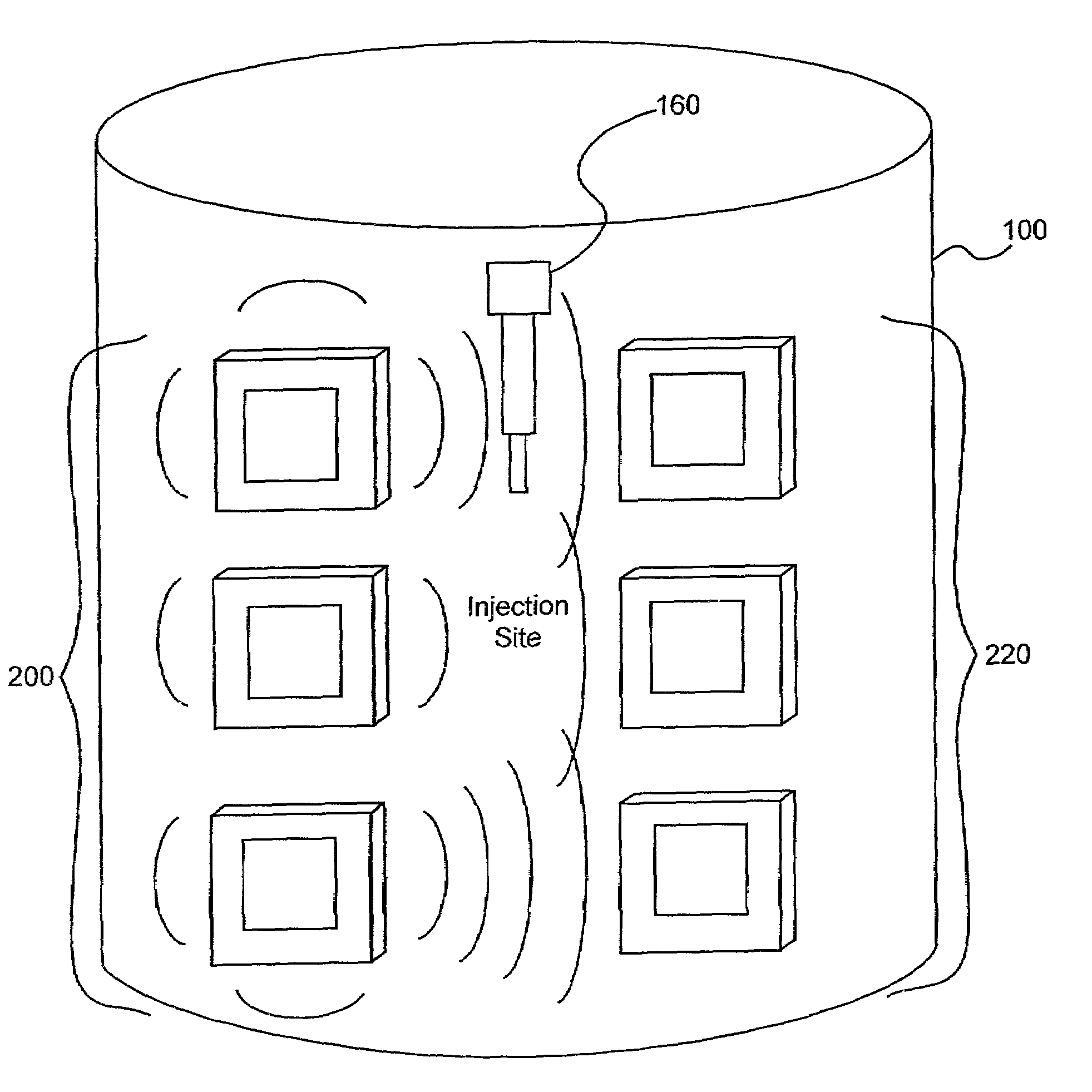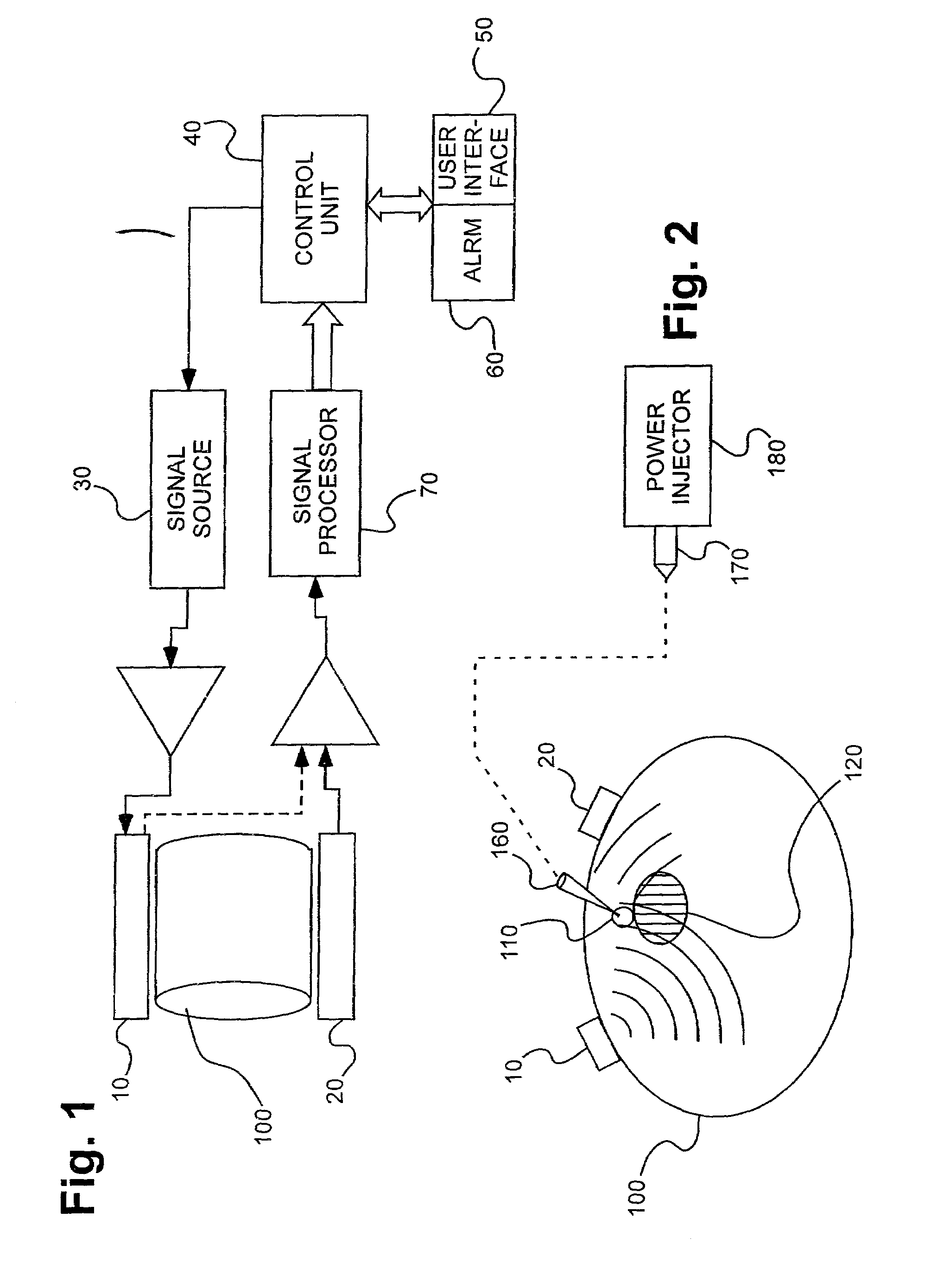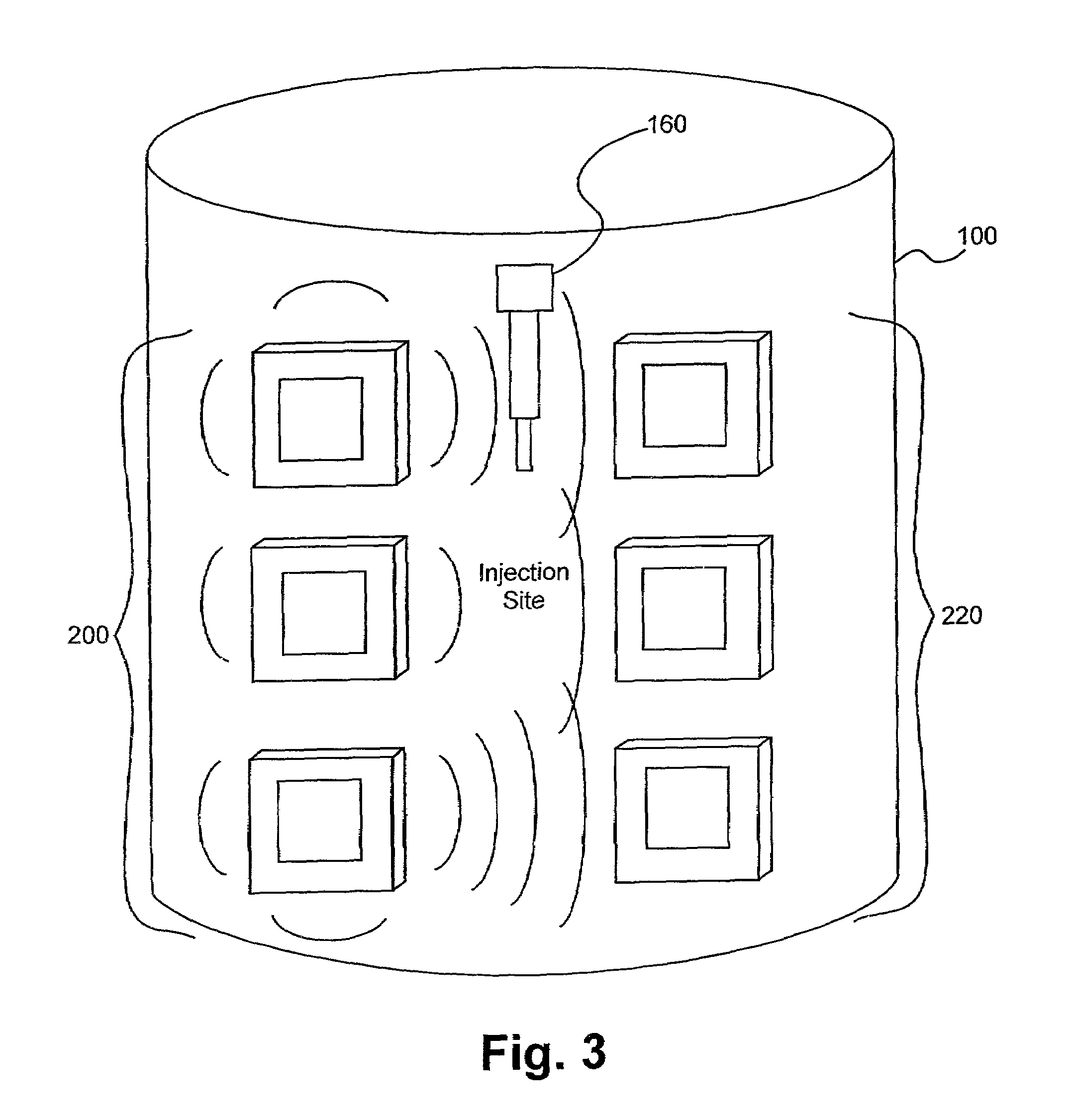Detection of fluids in tissue
a technology of tissue fluid and detection field, applied in the field of tissue fluid detection, can solve the problems of blood collecting and clotting (hematoma), patient does not remember, and the head injury may have been so minor, and achieve the effect of low profil
- Summary
- Abstract
- Description
- Claims
- Application Information
AI Technical Summary
Benefits of technology
Problems solved by technology
Method used
Image
Examples
experimental examples
[0114]1. Inorganic Phantom Experiments
[0115]Several experiments demonstrating the present invention were carried out using single and dual microstrip patch antenna configurations and an inorganic phantom to represent human tissue. Such inorganic phantoms provide the opportunity to accurately control both the position and amount of a simulated extravasation in an environment of generally known and simple dielectric properties (as compared to human tissue).
[0116]The microstrip antennae used in the studies were designed using Finite Difference Time Domain (FDTD) modeling techniques and were etched and fabricated in the laboratory. Standard equations, (generally available for well-understood geometries), were used to determine approximate dimensions required for the resonant structures of the various antennae studied in the present invention. Following that, substrate thickness was chosen to be a fraction of the wavelength corresponding to the primary resonant mode of the resonant struc...
PUM
 Login to View More
Login to View More Abstract
Description
Claims
Application Information
 Login to View More
Login to View More - R&D
- Intellectual Property
- Life Sciences
- Materials
- Tech Scout
- Unparalleled Data Quality
- Higher Quality Content
- 60% Fewer Hallucinations
Browse by: Latest US Patents, China's latest patents, Technical Efficacy Thesaurus, Application Domain, Technology Topic, Popular Technical Reports.
© 2025 PatSnap. All rights reserved.Legal|Privacy policy|Modern Slavery Act Transparency Statement|Sitemap|About US| Contact US: help@patsnap.com



